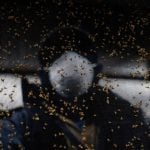The U.S. Department of Agriculture on Feb. 7 released its Jan. 1 cattle inventory report — and it appears that the contraction phase of the cattle herd may be coming to an end.
The 2024 calf crop was only marginally lower than the 2023 output. This was largely due to the decline in the beef cow slaughter. Beef cows that had calved as of Jan. 1, 2025, were only down 149,500 head from 12 months earlier.
U.S. dairy cows calved as of Jan. 1 were up 2,500 head from year-ago levels. It’s important to note many Holstein-Angus cross calves qualify as Certified Angus Beef in the U.S. market.
Read Also

Gentle treatments for pain in the neck
Heading toward year-end, people unknowingly tense up against the cold and busyness, causing neck pain that can often be treated with appropriate support and gentle mobility, athletic therapist Kathlyn Hossack says.
Feeder cattle prices, meanwhile, reached historical highs in January 2025. I’ve received many calls from cow-calf producers asking about the price forecast for the fall. I wouldn’t be surprised if calf prices topped out in the fall of 2025, then started to trend lower in 2026. It’s that time of year when we discuss total inventory numbers and projections for 2025 and 2026.
First, the U.S. beef cow slaughter for 2024 finished at 2.907 million head, down from 675,000 head from the 2023 processed number. The dairy cow slaughter for 2024 was 2.775 million head, down 358,900 head from the 2023 processed number.

Looking forward, we expect to see a similar year-over-year decline in the beef and dairy cow slaughter for 2025. The lower beef and dairy cow slaughter is sufficient to maintain the calf crop at current levels. This is the first sign of herd expansion activity because it’s the easiest and lowest-cost behaviour for the cow-calf producer.
The total calf crop for 2024 came in at 33.529 million head, down only 33,500 head from the 2023 output of 33,563 head. We basically say that the 2024 calf crop was the same as in 2023.
Heifers for beef cow replacement as of Jan. 1, 2025 were down about 46,000 head and milk replacement heifers were down around 57,000 head. This trend is expected to reverse in 2025. During the summer and fall of 2025, we expect U.S. cow-calf producers to hold back about 400,000 to 500,000 head of heifers for herd expansion. We’re expecting about 100,000 head of dairy heifers to be retained.
The calf crop for 2025 is expected to be similar to 2024 in the range of 33.6-33.8 million head, slightly higher than the 2024 output. The calf market will likely peak during the first round of heifer retention.
Feedlot operators have experienced a profitable round of feeding this winter. When a finishing operator is purchasing replacements, they will often bid up the price of feeder cattle so margins cover the cost of feed and interest only.
They need about six to eight months of negative margins before there is a serious adjustment in the feeder cattle price. We don’t believe prices are going back to values from three or four years ago; however, a 500-lb. steer trading in the range of $460-$480 is more reasonable, long-term, instead of the current value of around $550.
Given our projection, feeder cattle prices will likely hold value through the fall and early winter of 2025-26, then start to decrease next spring. There is potential for a serious downward adjustment in the feeder market in the summer and fall of 2026. We expect prices for bred cows and bred heifers to peak this fall, then soften. When owning cows, you have to look at a 10-year time frame and believe they are priced at fair value over the long run.
















